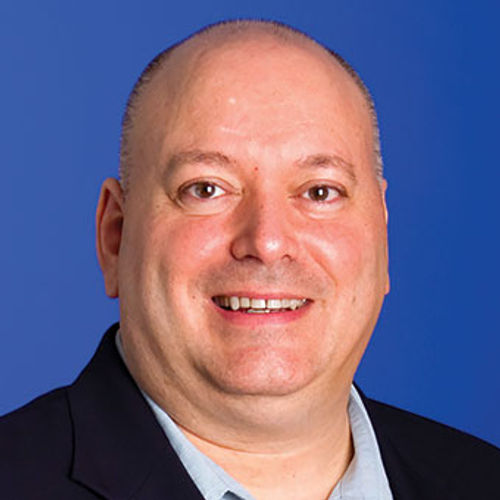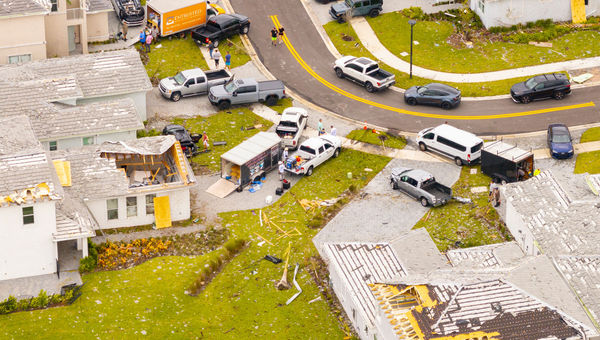Damage assessments are ongoing in the wake of hurricanes Helene and Milton, but tourism experts already say they expect the storms to reshape Florida's tourism landscape.
The most immediate impact will be along the state's Gulf Coast, where many of the small, independent hospitality businesses face a long and uncertain road to recovery.
"People are still surveying the impact," said Arthur Huang, an associate professor with the University of Central Florida's Rosen College of Hospitality Management. "But we do expect to see potential long-term damage to places like the Gulf Coast, where it may take a while for some attractions, beaches and infrastructure to come back."
Hurricane Helene made landfall near Perry, Fla., on Sept. 26 as a Category 4 storm. Less than two weeks later, on Oct. 9, Hurricane Milton made landfall as a Category 3 near Siesta Key in Sarasota County, bringing more destruction to areas already reeling from Helene's impact.

Peter Ricci
The double blow has left many coastal communities struggling. Peter Ricci, director of Florida Atlantic University's Hospitality and Tourism Management program, said he expects Sarasota destinations like St. Armands and Lido Key, as well Punta Gorda and Fort Myers Beach, to be among the Gulf Coast tourism hubs impacted by the recent storms.
And according to Ricci, the prospect of reopening may be out of reach for small businesses in severely affected areas. He pointed to Fort Myers Beach as an example. In the aftermath of Hurricane Ian in 2022, many small-scale hotel and resort operators in Fort Myers Beach chose to exit the market rather than face the challenges of restoration.
"Many of the mom-and-pops may take the insurance payout and decide not to rebuild," Ricci said. "Because if you built something in the 1970s and then try to rebuild it again in 2024, there's no way your insurance coverage will cover that."
Huang has the same concerns.
"Smaller businesses, hotels and restaurants will definitely suffer disproportionately due to limited resources and insurance coverage," Huang said. "And all properties in these areas, whether it's residential homes or businesses, will see a rise in insurance premiums. It's unavoidable, and it's going to be another burden for many businesses."
Ricci said the exodus of small businesses from Florida's Gulf Coast is likely to accelerate the region's transition toward higher-end tourism and hospitality development, as only well-funded developers will have the financial means to rebuild and comply with costly modern building codes.
"All along the Gulf Coast, I think we'll see [things becoming] more upscale and expensive, because there will be more newbuilds," Ricci said. "Things will improve, and it will have a new look and feel, but all of that comes at a tremendous cost."
Any level of rebuilding and restoration, however, will take time.
"In Fort Myers Beach, we've already seen how many fewer rooms are available in the marketplace because many hotels still have not reopened [after Hurricane Ian] or they just didn't reopen," Ricci added.
Huang pointed out that the impact of a long recovery extends well beyond property damage.
"It's going to be hard for a lot of people who work in the industry," Huang said. "If they work in these restaurants or hotels that are closed for an extended period of time and these people have no income, it's going to be especially challenging."

Before Milton made landfall on Florida's west coast, a tornado damaged homes in Palm Beach Gardens on Florida's east coast. Photo Credit: Felix Mizioznikov/Shutterstock
Impact on Tampa and Orlando
While most inland Central Florida destinations avoided the brunt of both hurricanes, tourism hubs like Tampa and Orlando may still experience aftershocks.
Ricci anticipates a ripple of near-term disruptions across both destinations, fueled in part by widespread cancellations and postponements of meetings and events.
"I think they will have a very difficult time for their next 90 to 120 days when it comes to group business, because they already had cancellations from Helene," Ricci said.
He added that the timing of the two storms, just ahead of Florida's high tourism season, further complicates matters, with properties having to balance the need to rebook meetings, events and other group business without displacing lucrative holiday bookings.
"Once we get through the first week or two of December, the rates start to go up through the end of April," Ricci said. "And these businesses can't really afford to lose their 12 weeks a year of high-season rates, because that's when they make much of their money."
Visit Florida zeros in on tourism recovery
As the state's tourism industry grapples with the aftermath of Helene and Milton, Visit Florida, the state's destination management organization, said it has launched a multipronged approach to support recovery efforts and maintain visitor interest in unaffected areas.
In a message sent to industry partners, Visit Florida CEO Dana Young said the organization began rolling out organic social media campaigns on Oct. 11, featuring "Stronger Than the Storm" messaging for in-state audiences and a "Florida Is Resilient" tag line for domestic markets.

Dana Young
For areas that escaped major damage, Visit Florida launched a paid social media campaign on Oct. 14 featuring "Sun Is Shining in Florida" messaging. According to the organization, this two-week campaign aims to highlight that many parts of Florida remain open and ready for travelers, featuring images and video captured immediately after Hurricane Helene.
"We are working with content creators to help showcase unaffected areas and will resume paid search and promotional programs," Young wrote, adding that several previously planned press trips to Florida are moving forward and the DMO's "Gift of Florida" campaign is also set to continue as scheduled in November and December.
"In the coming weeks, we will roll out a larger crisis-recovery initiative, with several million dollars in planned investment, to further support impacted destinations," Young added. She thanked partners "as we work together to ensure a swift and strong recovery for Florida's tourism industry."
Jason Latimer, director of communications for Visit St. Pete-Clearwater, said that despite the "one-two punch from hurricanes Helene and Milton, St. Pete-Clearwater is still shining."
Though some local businesses will need more time to recover, Latimer said the majority of the destination's hotels and visitor experiences have reopened, including the Dali Museum and Clearwater Marine Aquarium. As of Oct. 16, Clearwater Beach was making "final preparations" to welcome back visitors, while high-profile properties like the Don CeSar and the Vinoy Resort & Golf Club are expected to resume operations by the end of the month.
"People have undoubtedly seen images and videos in the news of the results of the hurricanes' impact, but these images are not reflective of the entirety of the destination," Latimer said. "In some parts of St. Pete, you wouldn't even be able to tell that a storm, let alone two, just came through the area, and that's really a testament to the resilience of this community."